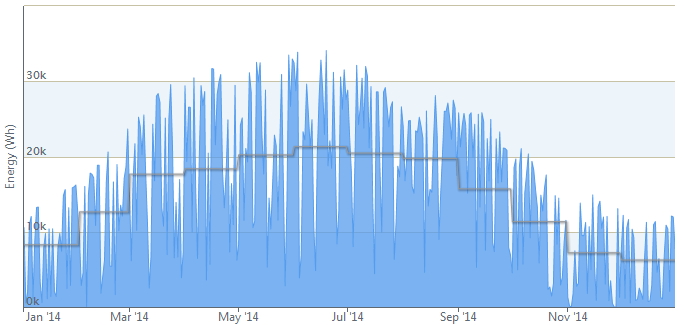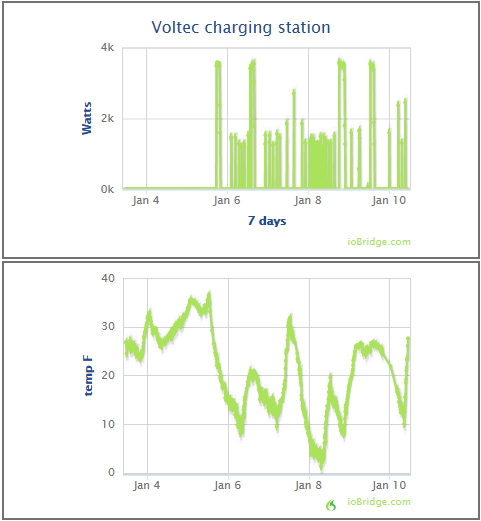June 2017 update: I upgraded to the FLIR One thermal camera that plugs into my smart phone. Much better and less expensive! http://mistersustainable.blogspot.com/2017/06/solving-mysteries-with-my-new-ir-vision.html
I am a geek and proud of it! I enjoy using instruments to quantify physical properties and have an arsenal of electronic instruments ranging from voltmeters and oscilloscopes to data loggers, a tachometer, decibel meter, Geiger counter, light meter and Gauss meters and many more. The most recent addition to my tool belt is a VT04 Visual IR Thermometer made by Fluke.
 |
| Fluke VT04 Visual IR Thermometer |
While the infrared overlay is not very high resolution, and shows as somewhat blurry compared to the professional cameras, it is perfectly sufficient for identifying cold spots inside buildings. The temperature shown is taken from the center of the image.
The temperatures here in Maine are below 0°F outside tonight, so I used my new tool to study the exterior walls of our home from the inside looking for cold areas that indicate missing or poor insulation.
One of the first things that I suggest that people do when they start out to tighten up the heat leaks in their home is to install outlet covers to prevent cold air leaking in through the outlets in outside walls. This is a quick inexpensive fix that can have a big effect. Here is a good example showing a normal image of an outlet with an electroluminescent nightlight blocking one outlet:
The coldest rooms in the house are the bathrooms and laundry room on the west wall. Here is a shot taken of the laundry room wall and ceiling. The cold area indicates poor or missing insulation, and now I know exactly what needs attending to. I will be looking into the crawl space above that part of the ceiling real soon!
The temperatures here in Maine are below 0°F outside tonight, so I used my new tool to study the exterior walls of our home from the inside looking for cold areas that indicate missing or poor insulation.
One of the first things that I suggest that people do when they start out to tighten up the heat leaks in their home is to install outlet covers to prevent cold air leaking in through the outlets in outside walls. This is a quick inexpensive fix that can have a big effect. Here is a good example showing a normal image of an outlet with an electroluminescent nightlight blocking one outlet:
As you can see the uncovered outlet is leaking cold air and if it were covered with a plastic outlet cover this would reduce the cold air infiltration. You can buy inexpensive kits that include gaskets and plugs to seal up these leaks. Here's a how-to about insulating outlets. I had already installed a foam gasket behind this outlet plate, so there is no cold air leaking around the edges, but I need to buy some more plastic plug-in covers for the actual outlets like this:
The coldest rooms in the house are the bathrooms and laundry room on the west wall. Here is a shot taken of the laundry room wall and ceiling. The cold area indicates poor or missing insulation, and now I know exactly what needs attending to. I will be looking into the crawl space above that part of the ceiling real soon!
Most houses do not have any insulation covering the rim joists between floors, and this may be part of the issue here.
The software that comes with the camera allows you to adjust the blend of normal vs IR after the images have been taken which can be very helpful in identifying what was in the shot. Another feature is the ability to take time-lapse sequences automatically. And you can set a temperature threshold so that the camera will automatically take a picture when it is exceeded. Both are features that I have plans to use in the future.
The Fluke VT04 will see a lot of use as I work to identify heat losses and repair them! It will also come in handy in my electronic design work so I can track overheating components.












.jpg)















